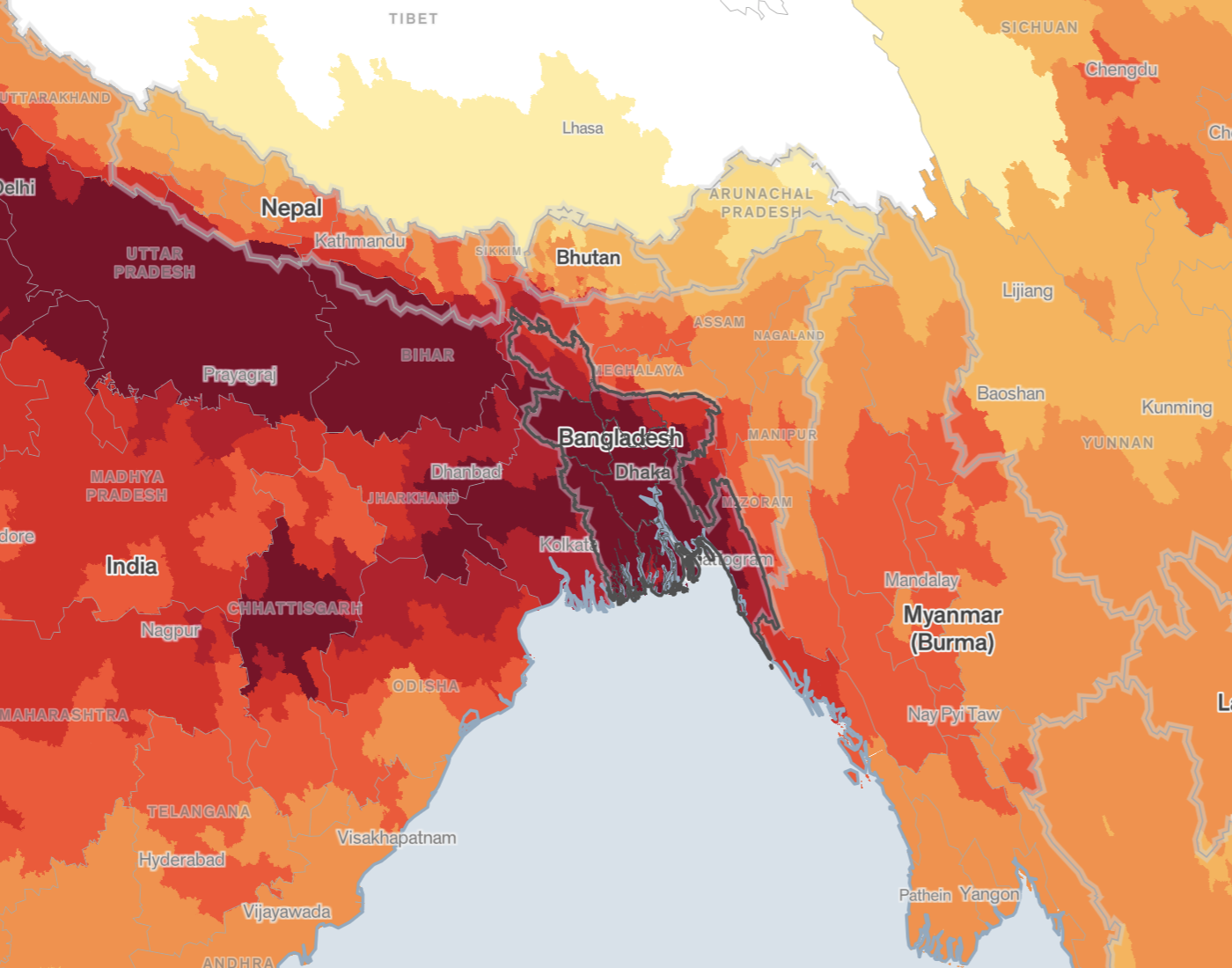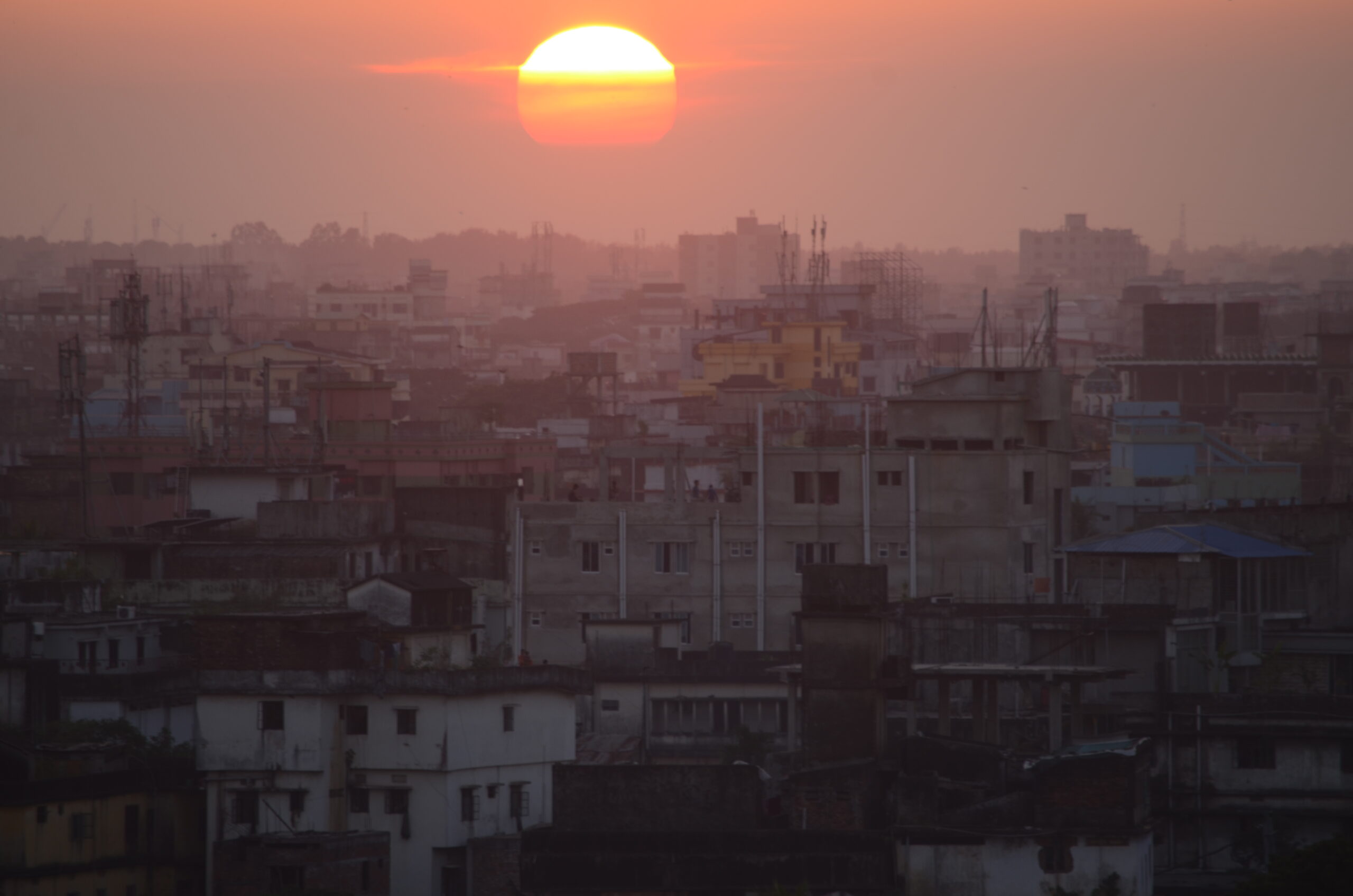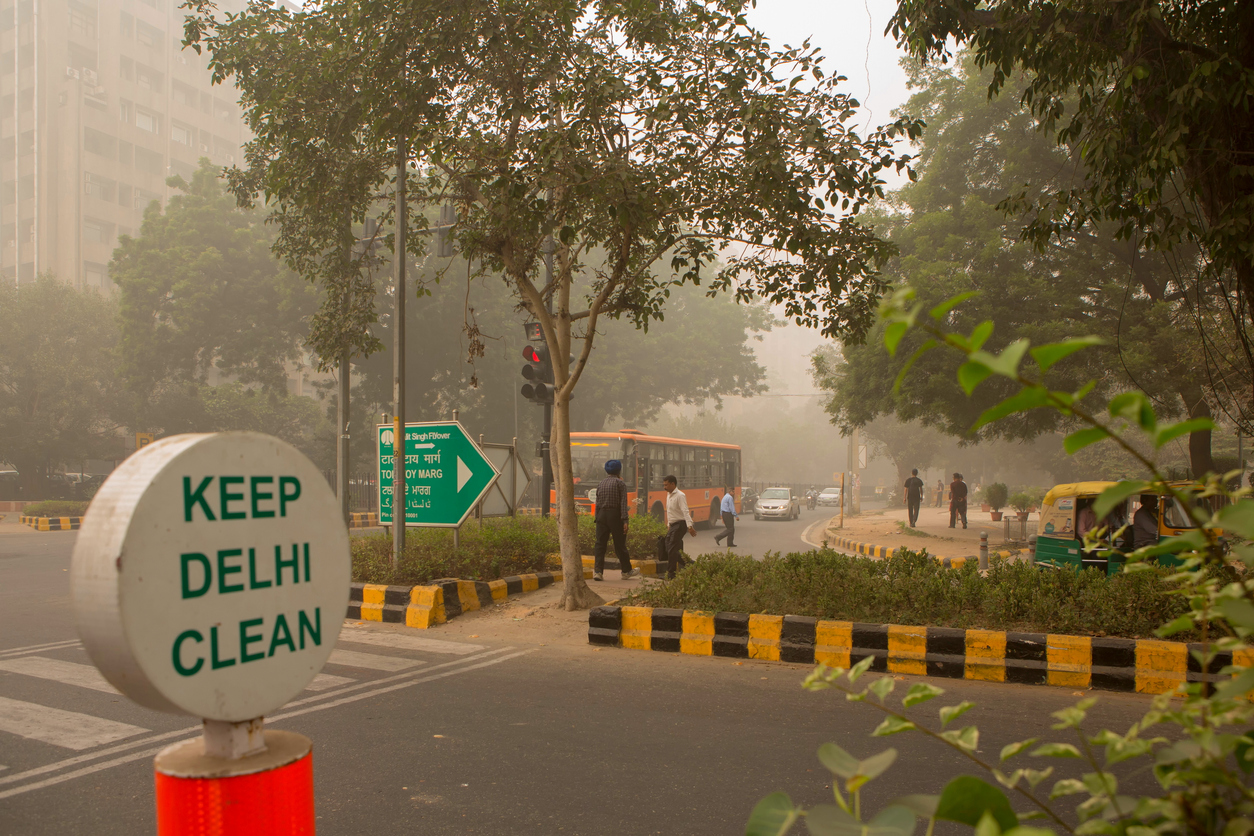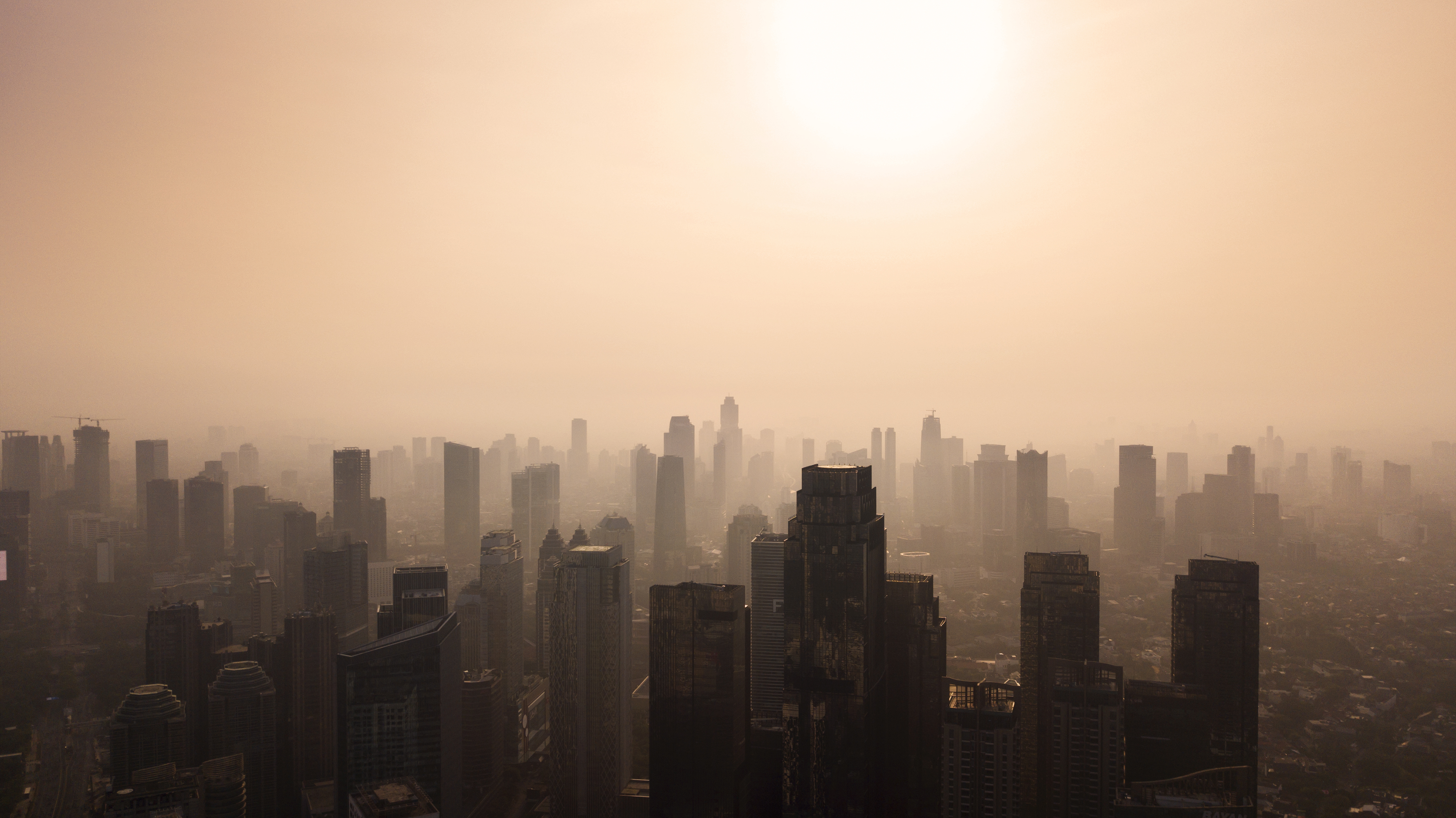Bangladesh is the world’s most polluted country. Fine particulate air pollution (PM2.5) shortens the average Bangladeshi resident’s life expectancy by 6.8 years, relative to what it would be if the World Health Organization (WHO) guideline of 5 µg/m³ was met.[1] Some areas of Bangladesh fare much worse than average, with air pollution shortening lives by 8.3 years in Gazipur, the country’s most polluted district located near the capital city of Dhaka.
KEY TAKE-AWAYS
- All of Bangladesh’s 164.8 million people live in areas where the annual average particulate pollution level exceeds both the WHO guideline and the country’s own national standard of 15 µg/m³. Even in the least polluted district of Sylhet, particulate pollution is 9.7 times the WHO PM2.5 guideline and 3.2 times the national standard.
- Measured in terms of life expectancy, particulate pollution is the second greatest threat to human health in Bangladesh (closely following cardiovascular diseases), taking 6.8 years off the life of the average Bangladeshi. In contrast, tobacco use reduces average life expectancy by 2.1 years, while child and maternal malnutrition reduces average life expectancy by 1.4 years.
- While particulate pollution decreased slightly (2.2 percent) from 2020 to 2021, it has increased over time. Since 1998, average annual particulate pollution has increased by 63 percent, further reducing life expectancy by 2.8 years.
- In some of the most polluted districts of the country, spread across the regions of Dhaka and Chittagong, 74.7 million residents or 45.3 percent of Bangladesh’s population are on track to lose 7.6 years of life expectancy on average relative to the WHO guideline and 6.6 years relative to the national standard if the current pollution levels persist.[2]
Policy Impacts
The current PM2.5 national standard in Bangladesh is 15 µg/m³. If the country’s pollution concentration were to meet this national standard, this would add 5.8 years onto the life of the average Bangladeshi citizen. The availability of reliable, timely and ready-to-use data on air pollution is one area where Bangladesh can make significant improvements. According to OpenAQ’s Open Air Quality Data: The Global Landscape 2022 report, the country does not have fully open public government air quality data. Making these datasets more fully accessible on a timelier basis would allow Bangladeshi citizens with a variety of skill sets to participate in addressing air pollution.
Footnotes
[1] This data is based on the AQLI 2021 dataset. All annual average PM2.5 values (measured in micrograms per cubic meter: µg/m³) are population weighted.
[2] Population weighted average of PM2.5 concentrations across all districts of Dhaka and Chittagong was computed and converted into average life expectancy lost for the region as a whole using AQLI methodology. See methodology section at the end for more details.
[3] Open Air Quality Data: The Global Landscape,” OpenAQ, 2022: https://documents.openaq.org/reports/Open+Air+Quality+Data+Global+Landscape+2022.pdf










